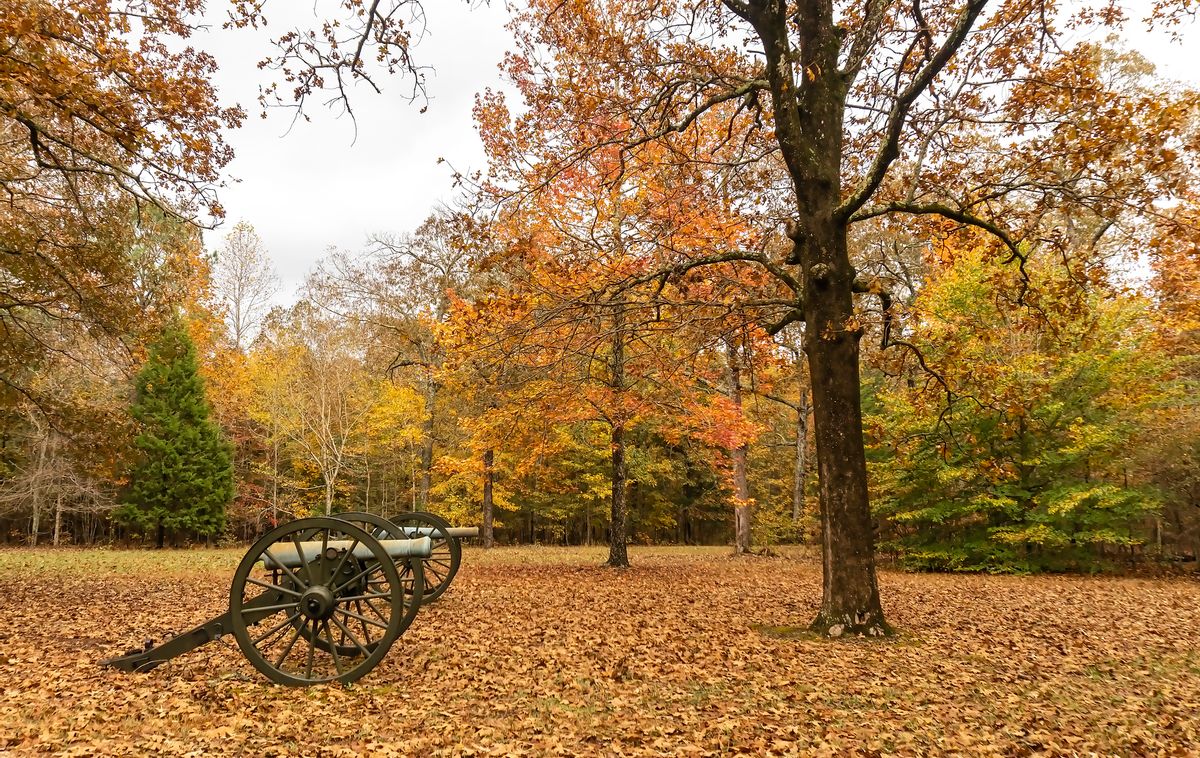According to Timothy B. Smith, a history lecturer at the University of Tennessee at Martin, the Battle of Shiloh was the first big battle in the American Civil War.
“20,000 dead in two days of fighting," he told Snopes. "I always say, America took a collective gasp at Shiloh.”
Before he was a history lecturer, Smith worked at the Shiloh National Military Park as a ranger. He’s published multiple books about the battle. But before a 2001 news report from the U.S. agriculture department, he had never heard of a long-held story about wounds that faintly glowed in the dark — a phenomenon that's become known as "angel's glow."
The tale begins in April 1862. Just under a year into the war, Union Army Maj. Gen. Ulysses S. Grant was already making great progress. He had captured two forts on the northern Tennessee border in February, before spending March advancing towards Corinth, Mississippi, a critical railway junction for the Confederates. Now, Grant set up camp on the banks of the Tennessee River, about 20 miles outside of Corinth, to wait for more troops to join him.
Before they arrived, however, the Confederates attacked Grant's site, and, as the fighting began, this irony became evident: The closest settlement, Shiloh, took its name from the Bible, and that name is sometimes translated to mean “place of peace.” Over the next two days, though, the fighting was intense and devastating.
According to researchers who discovered an explanation for the "angel's glow," the story of the glowing wounds goes like this: As the fighting on the first day at Shiloh ended and the Confederates pushed the Union troops back towards the Tennessee River, wounded soldiers noticed something remarkable — some of their wounds were supposedly faintly glowing in the dark. Even more, when the soldiers received medical aid at a field hospital, those with the alleged glowing wounds ended up having a higher chance of survival and faster recoveries than those without. Because of the glowing wounds' allegedly miraculous properties, the soldiers called them the “angel’s glow.”
That possible explanation for the "phenomenon" wouldn’t come until a Maryland high schooler whose mother researched phosphorescent bacteria visited the battlefield. He wondered if the bacteria his mother was studying could have caused the purported glow, and he experimented with a friend to find out, entering their project into the Intel International Science and Engineering Fair. Their findings suggested that the bacteria, P. luminescens, could have been in the soil where the battle occurred, and it was possible that it made its way from the dirt into soldiers' wounds — producing the glow. According to the theory, P. luminescens, which has a symbiotic relationship with a parasitic worm called a nematode, killed off other small organisms that might have caused an infection, allowing both creatures to reproduce unchallenged. For their findings, the students were awarded first prize in the fair.
(Snopes could not independently corroborate the details of that story, including whether the alleged science-fair project existed at all.)
At first glance, the high schoolers' theory appears to be a convincing solution, complete with science to back it up. However, Civil War historians have come to a different conclusion. For them, the most credible sources of information are those written soon after an event and authored by someone who witnessed it firsthand. Smith said there are over 2,000 such sources for the Battle of Shiloh, but none mention glowing wounds.
“It would be weird to see somebody glowing in the dark,” Smith said. “And amidst all those sources, there’s not one contemporary account of the phenomenon.”
Smith found it strange that he couldn't find any sources at Shiloh reporting it and looked to other battlefields to see if he could find references to the phenomenon elsewhere. However, his eventual conclusion was that "angel's glow" never actually happened, and whoever invented the story (likely the high schoolers) chose Shiloh as a site because of its notoriety.
“In a lot of ways, Shiloh is sort of like the Western Gettysburg. Everyone writes about the Eastern Theater, and Gettysburg has become the mecca of Civil War folklore. If there is one battle from the Western Theater like that, it would be Shiloh,” he said. “And if this happened at Shiloh, it would have happened elsewhere too, and I haven’t seen accounts there either.”
Smith said just because there aren’t any written records about the alleged phenomenon doesn’t mean it didn’t happen. But humanity’s morbid fascination with blood and guts and a clever scientific solution form a compelling reason why people might believe the angel's glow ever occurred in the first place.
